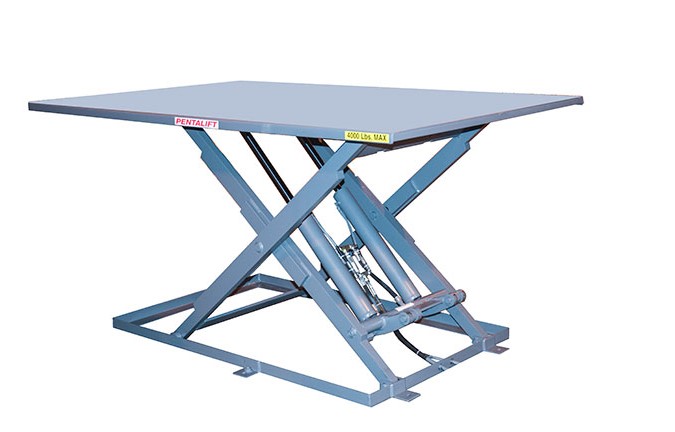Introduction
In the bustling industry world, efficiency isn’t just a goal—it’s a necessity. But how do you achieve this efficiency without compromising safety and productivity? Enter the electric lift platform. This advanced equipment transforms businesses’ operations, offering unparalleled advantages that traditional methods can’t match.
Understanding Electric Lift Platforms
Definition and Basic Functionality
Electric lift platform are mechanical devices designed to elevate workers and materials to different heights safely and efficiently. These platforms can be controlled with precision by electric motors, making them ideal for various industrial tasks.
Key Components
At the heart of an electric lift platform are several key components: the platform itself, the scissor or boom mechanism, the electric motor, and the control system. Together, these elements allow for smooth, controlled lifting and lowering, ensuring safety and efficiency.
Types of Electric Lift Platforms
Scissor Lift Platforms
Scissor lifts are among the most common types. They feature a crisscrossing metal support design that allows for vertical movement. They are ideal for tasks requiring stable elevation at a single height.
Boom Lift Platforms
Thanks to their articulated or telescopic arms, boom lifts provide horizontal reach in addition to vertical lift. This makes them perfect for tasks that require access to hard-to-reach areas.
Vertical Mast Lift Platforms
These compact lifts are designed for tight spaces and offer vertical elevation without the extensive footprint of scissors or boom lifts.
Articulating Lift Platforms
With multiple hinged sections, articulating lifts offer maximum maneuverability, allowing for precision work in complex environments.
Advantages of Using Electric Lift Platforms
Enhanced Safety
Electric lift platforms have numerous safety features, such as guardrails, emergency stop buttons, and non-slip surfaces, which significantly reduce the risk of accidents.
Improved Productivity
These platforms can drastically improve productivity in any industrial setting by eliminating the need for manual lifting and providing quick, precise elevation.
Environmental Benefits
Electric motors produce fewer emissions than their hydraulic or pneumatic counterparts, contributing to a greener, more sustainable operation.
Cost-Effectiveness
While the initial investment may be higher, long-term labour costs, maintenance, and energy savings make electric lift platforms cost-effective.
Applications of Electric Lift Platforms
Warehousing and Storage
In warehouses, electric lift platforms streamline storing and retrieving items from high shelves, enhancing efficiency and reducing worker strain.
Construction
These platforms provide safe, stable access to elevated work areas on construction sites, making painting, installation, and maintenance more efficient.
Manufacturing
In manufacturing plants, electric lift platforms facilitate the movement of heavy machinery and materials, improving workflow and reducing downtime.
Maintenance and Repairs
These platforms offer safe access to high and hard-to-reach areas for maintenance tasks, ensuring that repairs can be conducted swiftly and effectively.
Key Features to Look for in Electric Lift Platforms
Load Capacity
Ensure the platform can handle the maximum weight you need to lift, including workers and materials.
Platform Height
Consider the maximum elevation required for your tasks and choose a platform that meets these needs.
Mobility and Maneuverability
Evaluate how easily the platform moves and positions, especially in tight or cluttered spaces.
Power Source and Battery Life
Look for platforms with robust battery life to ensure they can operate for extended periods without frequent recharging.
Safety Considerations
Importance of Training
Proper training is essential for operators to use electric lift platforms safely and effectively. Regular training sessions should be part of your safety protocol.
Regular Maintenance
Routine checks and maintenance are crucial to keep the equipment in optimal working condition and prevent accidents.
Safety Features
Ensure the platform has essential safety features like emergency stop buttons, guardrails, and automatic levelers.
Compliance with Regulations
Ensure your equipment complies with local and international safety regulations and standards.
Comparing Electric Lift Platforms to Other Lifting Solutions
Manual Lifting Equipment
Manual equipment may be cheaper but requires more labour and poses a higher risk of injury, making electric platforms a superior choice for efficiency and safety.
Hydraulic Lift Platforms
While powerful, hydraulic lifts are often less environmentally friendly and more expensive to maintain than electric models.
Pneumatic Lift Platforms
Pneumatic lifts are effective but less precise and more challenging to control than electric platforms.
Choosing the Right Electric Lift Platform for Your Needs
Assessing Your Requirements
Consider your operation’s specific needs, including the types of tasks, weight capacities, and height requirements.
Evaluating Different Models
Research and compare different models to find the best fit for your needs and budget.
Considering Future Needs
Consider how your needs evolve and choose a platform that can adapt to future demands.
Installation and Setup
Preparing the Site
Ensure the installation site is prepared, with clear pathways and stable ground.
Installation Process
Follow the manufacturer’s guidelines for installation to ensure the platform is set up correctly and safely.
Initial Testing and Adjustments
Conduct thorough testing to ensure everything functions correctly and make any necessary adjustments before the entire operation.
Maintenance and Troubleshooting
Routine Maintenance Tips
Regularly inspect and service your lift platforms to keep them in top condition. This includes checking for wear and tear, lubricating moving parts, and charging batteries.
Common Issues and Solutions
Be prepared to address issues like platform instability, control malfunctions, and power failures. Having a troubleshooting guide and spare parts on hand can minimize downtime.
Case Studies: Success Stories with Electric Lift Platforms
Warehouse Optimization
A logistics company increased its storage capacity by 30% and reduced picking time by 40% using electric lift platforms.
Construction Efficiency
A construction firm reported a 50% reduction in project completion times thanks to electric boom lifts’ enhanced reach and maneuverability.
Manufacturing Improvements
A manufacturing plant saw a 25% boost in productivity after integrating electric lift platforms into their assembly line, reducing the need for manual handling of heavy components.
Future Trends in Electric Lift Platforms
Technological Advancements
Expect innovations like IoT integration, autonomous operation, and enhanced safety features to become standard in future models.
Sustainability Initiatives
With a growing focus on sustainability, future electric lift platforms will likely feature more eco-friendly materials and energy-efficient designs.
Market Growth Projections
The market for electric lift platforms is set to grow significantly, driven by increased automation and the need for safer, more efficient lifting solutions.
Conclusion
Electric lift platforms are revolutionizing industrial efficiency, providing safer, more cost-effective, and environmentally friendly alternatives to traditional lifting methods. By understanding their benefits and choosing the right platform for your needs, you can significantly enhance productivity and safety in your operations.
FAQs
How do electric lift platforms improve safety?
Features like guardrails, emergency stop buttons, and automatic levelers systems significantly reduce the risk of accidents and injuries.
What are the main differences between scissor lifts and boom lifts?
Scissor lifts provide vertical elevation and are ideal for stable, high-reach tasks. In contrast, boom lifts offer vertical and horizontal reach, making them perfect for accessing hard-to-reach areas.
How often should electric lift platforms be maintained?
Regular maintenance is essential. Performing routine checks weekly and more thorough inspections and servicing every few months, depending on usage, is recommended.
Can electric lift platforms be used outdoors?
Yes, many are designed for outdoor use. However, ensure they are rated for outdoor conditions and have appropriate weatherproofing features.
What are the latest innovations in electric lift platforms?
Recent innovations include IoT integration for real-time monitoring, autonomous operation capabilities, and enhanced safety features like collision detection and advanced stability controls.





